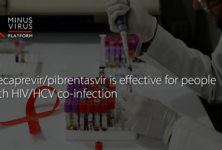The vast majority of people taking antiretroviral therapy (ART) in the UK have an accurate knowledge of their current viral load (VL) level, investigators report in HIV Medicine. Overall, 96% of people who told researchers their viral load was undetectable had a clinic-recorded viral load below 50 copies/ml, with 99% having a viral load below 1000 copies/ml.
“The accuracy of reporting an undetectable VL [viral load] by HIV-positive individuals on ART is directly relevant to their HIV-negative sexual partners, if the HIV-positive partner’s VL influences decision-making around condom use,” comment the authors. “The high level of accuracy of a self-reported undetectable viral load is encouraging, as this implies that decisions to have condomless sex on this basis will generally be well informed.”
Several factors suggestive of social exclusion were associated with incorrect reporting of viral load, and the researchers recommend individuals with these characteristics should receive targeted support.
Viral load and CD4 cell count are two key tests used to monitor the health of people with HIV and the effectiveness of ART. Viral load is also associated with infectiousness, and there is now evidence from several large studies confirming that people treated with ART who have an undetectable viral load are not infectious to their sexual partners.
Investigators from the UK Antiretrovirals, Sexual Transmission Risk and Attitudes (ASTRA) study wanted to assess whether people taking ART had an accurate understanding of their latest viral load and CD4 count.
The researchers designed a study involving 2678 people receiving antiretroviral treatment at clinics in the United Kingdom. All completed a questionnaire enquiring if their viral load was undetectable (below 50 copies/ml), detectable (above 50 copies/ml) or don’t know. Participants were also asked to report their CD4 cell level. Answers were compared to clinic records. Recruitment took place between 2011 and 2012.
Over two-thirds (68%) of participants were in the MSM risk group, 68% were white and the mean age was 46 years. A substantial minority (43%) of people were not born in the UK, and 22% of this group said they were not fluent in English. The majority (56%) of participants were employed and 41% had a college degree. However, there was evidence that many were struggling to cover their basic necessities, with only 43% saying they always had enough money.
The majority of people (63%) had been taking ART for at least five years. A quarter reported missing a dose of therapy in the previous two weeks, and 17% said they had missed two or more consecutive days of ART at least once in the past three months.
Analysis of clinic records showed that 87% of participants had an undetectable viral load. In terms of self-reported viral load, 80% of people said their viral load was undetectable, 9% reported a detectable viral load and 11% were unsure of their viral load.
Of the 2334 people with a clinic-recorded undetectable viral load, 88% correctly reported that their viral load was below 50 copies/ml, with 2% incorrectly reporting their viral load was detectable, and 9% did not know their current viral load.
A total of 344 people had test results showing their viral load was detectable. Over half (53%) correctly reported their viral load. However, 22% incorrectly reported their viral load was undetectable and 25% were unaware of their viral load.
Of the 2137 people who self-reported an undetectable viral load, 96% had a clinic-recorded viral load below 50 copies/ml and 99% had test results showing a viral load below 1000 copies/ml.
Overall, agreement between self-reported viral load and clinic-recorded viral load was 84%.
The vast majority (82%) of people had a clinic-recorded CD4 count above 350 cells/mm3. Seventy-six per cent of people with a CD4 count at this level correctly self-reported their CD4 count. Only 13% of people with a CD4 count below 350 cells/mm3 incorrectly reported their CD4 count. Overall, a fifth of people did not accurately know whether their CD4 count was below 350 cells/mm3.
Several factors were associated with inaccurate reporting of viral load.
These included not having enough money for basic needs (Prevalence ratio = 2.4; 95% CI 1.9-3.1), poor fluency in English (PR = 3.5; 95% CI 2.4-51), non-disclosure of HIV infection status (PR = 1.7; 95% CI 1.3-2.1), non-adherence to ART (PR = 2.1; 95% CI 1.7-2.7) and depressive symptoms (PR = 1.9; 95% CI 1.6-2.2).
“The results could…be interpreted as showing that health providers are less successful in actively engaging HIV-positive people who have more complex needs in their own health care,” write the researchers. “Possible strategies to improve such engagement may include having clearer explanations after diagnosis about the importance of CD4 and VL and what they mean for care.”
They conclude, “our results demonstrate high accuracy of a self-report of undetectable VL among people receiving ART in the UK.”
By Michael Carter
Reference
Sewell J et al. Accuracy of self-report of HIV viral load among people with HIV in antiretroviral treatment. HIV Medicine, online edition. DOI: 10.1111/hiv.12477 (2016).


 ПОИСК ПО САЙТУ
ПОИСК ПО САЙТУ  поиск по ресурсному центру
поиск по ресурсному центру 



